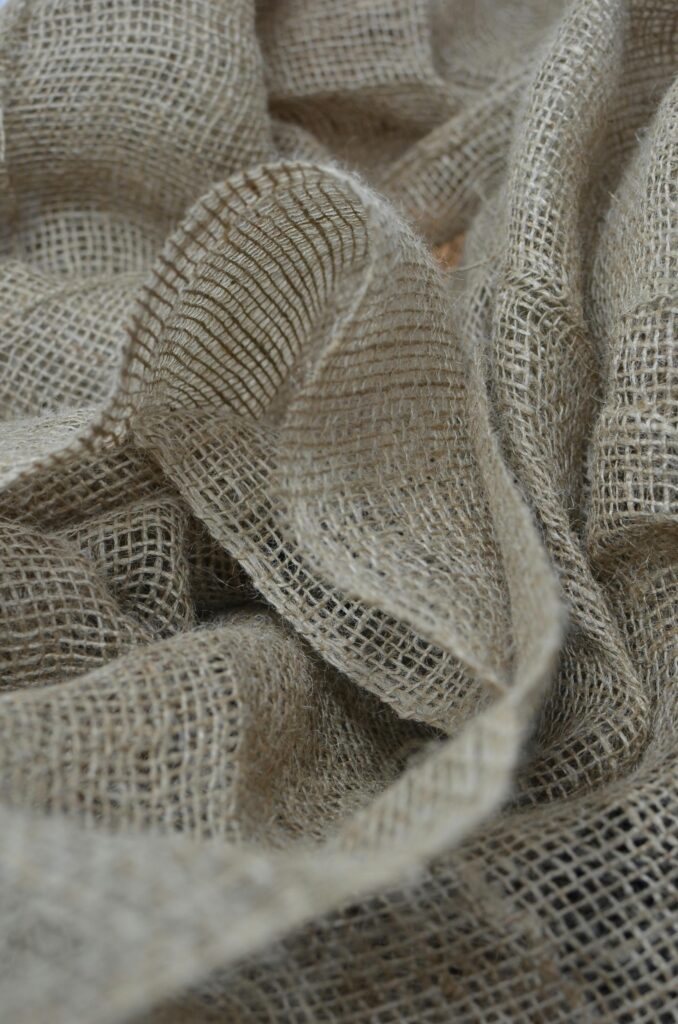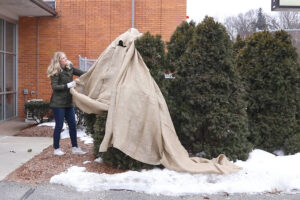How Burlap Protects Trees from Deer and Winter Damage
Deer, rabbits, and other critters can do serious damage to your trees during the winter. When snow covers the ground and food sources become scarce, animals often turn to tender bark, branches, and young plants for nourishment. At the same time, winter winds, heavy snow, and salt damage can weaken even established evergreens. Burlap tree wrapping offers a simple, natural way to protect your trees from both wildlife and the elements, keeping your yard or nursery healthy through every freeze and thaw.
Using burlap for tree wrapping is one of the most natural, cost effective ways to shield your trees. It deters hungry animals, softens the blow of harsh winds, and prevents ice from building up on fragile branches. Plus, burlap is biodegradable, so if you leave it out for more than one season in your garden or field, it breaks down naturally and safely.
Why Burlap is the Best Material for Tree Wrapping
Unlike plastic or synthetic materials, natural burlap allows for healthy air circulation. It keeps moisture from getting trapped inside the wrap while still blocking freezing wind and harsh sunlight. Burlap wrap also diffuses light to prevent winter burn on the bark and leaves.
Because it’s biodegradable, it won’t harm the environment or the animals that live around your garden. Growers and landscapers rely on burlap wraps for trees because they’re safe, effective, and easy to reuse year after year.

A Step-by-Step Guide to Wrapping Trees with Burlap
- Start before the cold hits. Begin wrapping trees in late fall before the first frost or ice storm.
- Gather materials. You’ll need burlap, twine, and a few wooden stakes to support the wrap.
- Wrap loosely. Start at the base and wrap upward, allowing air circulation so the bark can breathe.
- Secure with twine. Use twine to attach burlap to stakes, keeping it snug but not tight enough to bend branches.
- Remove in spring. Once snow melts and temperatures rise, remove the burlap to let sunlight reach the trunk and leaves again.
Using Burlap for Deer and Critter Protection
Deer love to eat cedar bark, while rabbits and rodents chew on the lower trunk and roots during the winter. Burlap acts as a great barrier, blocking access without restricting airflow or sunlight to the tree. You can use it as a full wrap around young trees or as a burlap fence for shrubs and hedges. For extra protection, attach the burlap to wooden stakes using twine, forming a screen around your plants.
This setup discourages deer and other animals from getting close, while keeping your trees protected all season long.
Why Winter Protection Still Matters
Even if deer and critters weren’t an issue, cedar trees and evergreens can need protection from winter damage. Cold air dries out needles and bark, while heavy snow and ice can break branches. Burlap tree covers provide insulation from frost and shield against salt damage from roads. Young plants and small shrubs benefit the most since they’re still developing strong roots and bark. For homeowners and growers, wrapping trees before fall temperatures drop helps prevent costly replacements come spring.
Benefits for Tree Growers and Landscapers
For nurseries and large-scale growers, burlap offers an efficient, cost effective way to prevent damage. It protects plants during storage or transport, shields against frost, and saves young evergreens from salt exposure.
At St. Boniface Bag Co., we provide bulk burlap rolls and burlap bags that are easy to handle, reusable, and made for professionals who need reliable protection year after year.
Choosing the Right Burlap Wrap for Your Trees
Burlap comes in different weaves and sizes: fine weave for small trees and shrubs, open weave for larger evergreens needing airflow. When selecting your burlap wrap, consider the height and branch spread of each tree. Ordering burlap rolls in bulk from our website ensures you always have enough on hand, whether you’re protecting a few garden trees or an entire nursery.
Our team can help you choose the right product based on your location and growing conditions.
Give Us a Call To Learn More And Plan For YOUR Winter Season
For reliable, natural protection this winter, order bulk burlap rolls and burlap bag from St. Boniface Bag Co. Whether you’re wrapping cedar trees in your yard or safeguarding evergreens across a nursery, our burlap products make it easy to keep your trees safe from deer, rabbits, and the winter weather.
Get in touch to order burlap wrap and bags today and keep your trees protected year after year.
FAQs
Should I wrap my tree in burlap?
For some trees in cold climates, yes, wrapping trees in burlap helps protect them from cold temperatures, winter winds, and animal damage. It’s especially useful for young plants, cedar trees, and shrubs that haven’t developed strong bark yet.
What is the best material to wrap a tree?
Burlap is the best material because it’s breathable and allows air circulation while shielding against frost, wind, and sun. Unlike plastic, it won’t trap moisture and cause rot.
How to wrap a tree with burlap for winter?
Start at the base and wrap upward using wide strips of burlap. Secure with twine or stakes, leaving enough room for airflow. Be sure to remove the wrap in spring once frost risk has passed.
What to wrap around a tree trunk to prevent ants?
Burlap can act as a gentle barrier that discourages ants, but for better control, you can apply a sticky insect barrier or natural deterrent underneath the burlap.
How to put burlap on a tree?
Unroll your burlap and drape it loosely around the branches or trunk. Use wooden stakes and twine to keep it in place. Avoid pulling it too tight—it should protect, not suffocate.
What is the best material to wrap trees for winter?
Natural burlap remains the top choice because it’s eco-friendly, breathable, and effective in guarding trees against ice storms, deer, and salt damage.
When should you burlap trees?
Start wrapping in late fall before frost or heavy snow arrives. This ensures protection through the coldest months without trapping moisture from early fall rain.
Can burlap be used for frost protection?
Yes, burlap helps insulate trees and plants during frosty nights. It prevents rapid temperature drops and helps retain ground warmth.
How to attach burlap to stakes?
Use twine or zip ties to secure the burlap to wooden stakes. Make sure it’s tight enough to resist wind but loose enough to avoid tearing in heavy snow.
What is the best way to deer proof a garden?
Combine burlap barriers with natural repellents like soap or motion-activated sprinklers. Burlap fencing blocks access while still allowing light and air to reach your plants.




